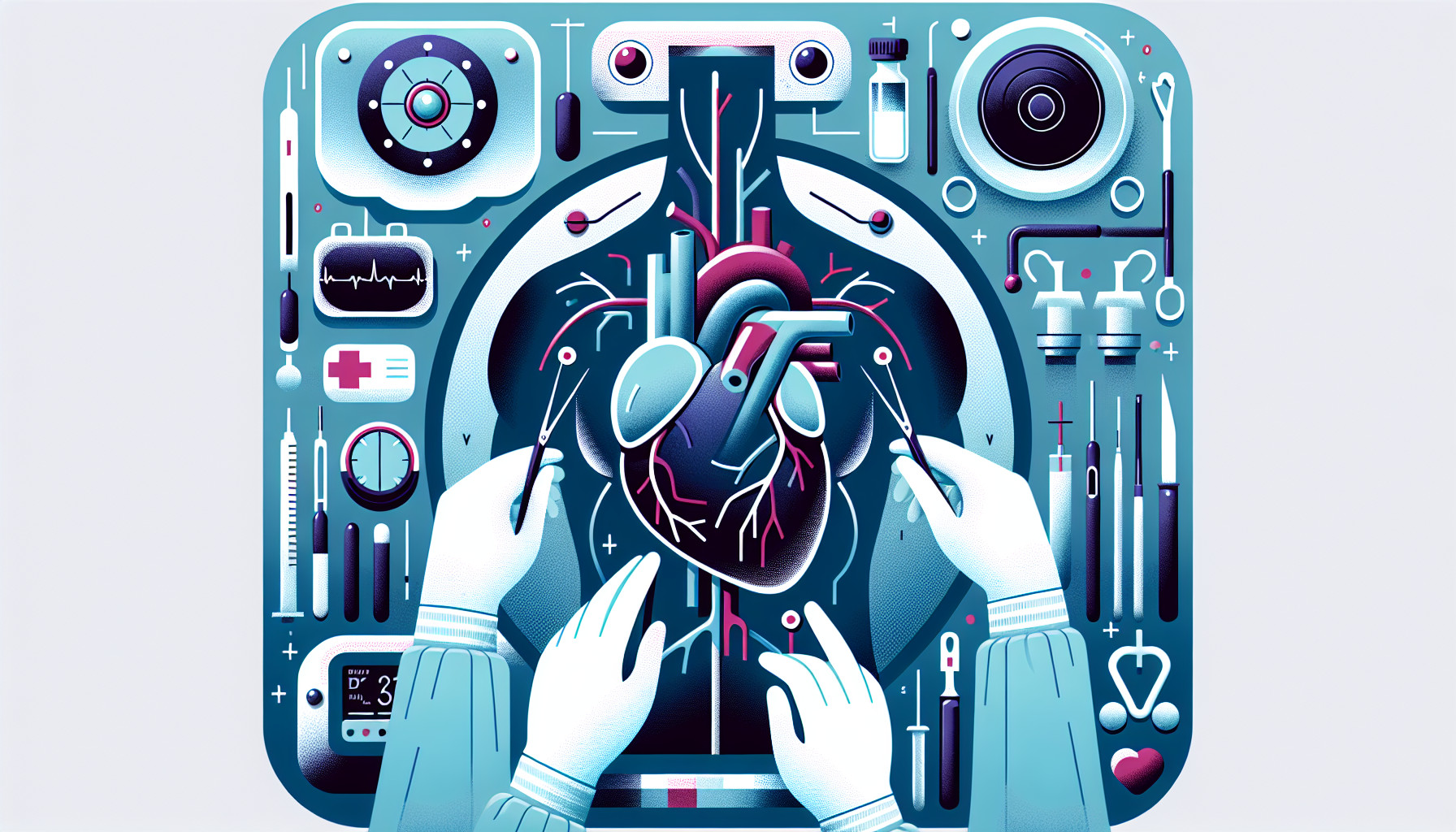Our Summary
This research paper talks about a particular case where a patient who was undergoing a type of heart surgery with the help of a robot experienced a dangerous complication. The procedure, known as robotic-assisted coronary artery bypass grafting, is becoming more common.
In this case, the patient developed a tension pneumothorax - a serious condition where air gets into the space between the lung and the chest wall, causing the lung to collapse. This happened while the patient’s left internal mammary artery was being harvested (or removed) for the bypass surgery. The situation was made worse because the patient was on a ventilator, which can intensify the effects of a pneumothorax.
The doctors noticed something was wrong when the pressure in the patient’s airway suddenly increased and their blood pressure dropped dramatically. They quickly used the robot to open up the right side of the patient’s chest, identified the pneumothorax, and were able to relieve the pressure on the lung. They also found and treated a small area of damaged lung tissue.
The paper emphasizes how important it is for doctors to be aware of and quickly respond to possible complications during these types of surgeries. A tension pneumothorax can be deadly, especially for patients on a ventilator.
FAQs
- What complications have emerged with the increasing use of robotic-assisted coronary artery bypass grafting?
- What is a tension pneumothorax and how is it associated with robotic-assisted coronary artery bypass?
- How is a tension pneumothorax managed during a robotic-assisted coronary artery bypass?
Doctor’s Tip
A helpful tip a doctor might tell a patient about coronary artery bypass is to follow the post-operative care instructions carefully, including taking medications as prescribed, attending follow-up appointments, and engaging in recommended lifestyle changes such as a heart-healthy diet and regular exercise. It is also important to report any unusual symptoms or complications to your healthcare provider immediately.
Suitable For
Patients who are typically recommended for coronary artery bypass surgery include those with severe coronary artery disease that cannot be managed with medications or less invasive procedures such as angioplasty. Patients with significant blockages in multiple coronary arteries, those with left main coronary artery disease, or those with decreased heart function may be candidates for coronary artery bypass surgery. Additionally, patients who have previously undergone angioplasty but have experienced restenosis or recurrent blockages may also be recommended for coronary artery bypass surgery.
Timeline
Before coronary artery bypass surgery, a patient may experience symptoms such as chest pain, shortness of breath, fatigue, and dizziness. They may undergo diagnostic tests such as an angiogram to determine the extent of blockages in the coronary arteries. Once the decision is made to proceed with coronary artery bypass surgery, the patient will undergo preoperative preparations such as blood tests, imaging studies, and consultations with the surgical team.
During the robotic-assisted coronary artery bypass surgery, the patient is placed under general anesthesia and a small incision is made to access the heart. The surgeon uses robotic instruments to harvest the necessary blood vessels, such as the internal mammary artery, to create bypass grafts. The bypass grafts are then connected to the blocked coronary arteries to restore blood flow to the heart muscle.
After the surgery, the patient will be closely monitored in the intensive care unit for a period of time to ensure proper recovery. They will be given pain medication, antibiotics, and other medications as needed. Physical therapy may be initiated to help the patient regain strength and mobility. The patient will also receive instructions on postoperative care, including dietary guidelines, activity restrictions, and follow-up appointments with their healthcare provider.
Overall, the timeline for a patient undergoing coronary artery bypass surgery involves preoperative evaluations, the surgical procedure itself, and postoperative care to ensure a successful recovery and improved heart function.
What to Ask Your Doctor
Some questions a patient should ask their doctor about coronary artery bypass surgery may include:
- What are the potential risks and complications associated with the surgery?
- What is the success rate of the procedure?
- How long is the recovery process and what can I expect during the recovery period?
- Will I need to make any lifestyle changes or take medications after the surgery?
- What are the alternatives to coronary artery bypass surgery and why is this the recommended treatment for me?
- How experienced is the surgical team in performing this procedure?
- Will I need to undergo any additional tests or procedures before the surgery?
- What type of anesthesia will be used during the surgery?
- How long will the surgery take and how long will I need to stay in the hospital?
- What can I do to prepare for the surgery and improve my overall outcome?
Reference
Authors: Zabani IA, Alhassoun AM, Ahmed HS, Bogis AA, Elmahrouk AF, Jamjoom AA, AlUthman US. Journal: J Card Surg. 2022 Dec;37(12):5536-5538. doi: 10.1111/jocs.17115. Epub 2022 Nov 6. PMID: 36335593
